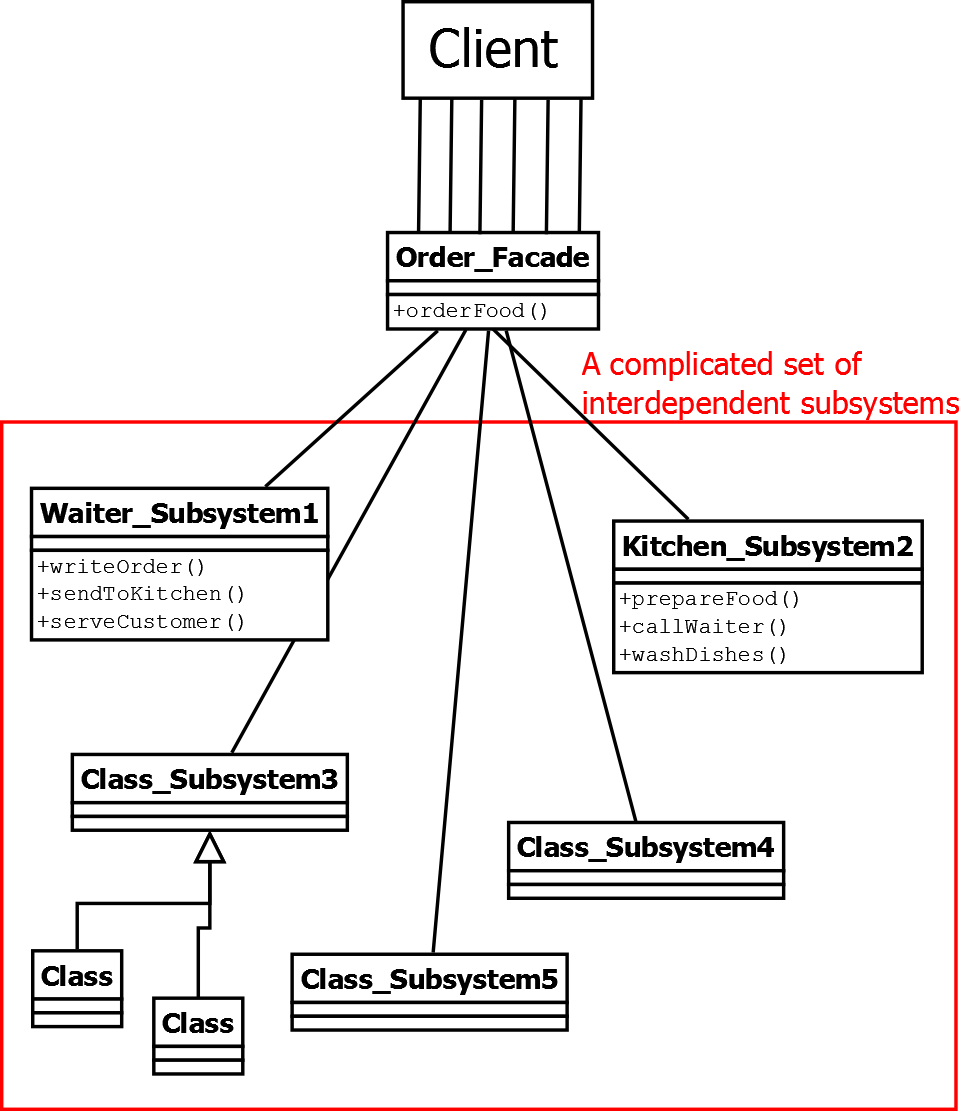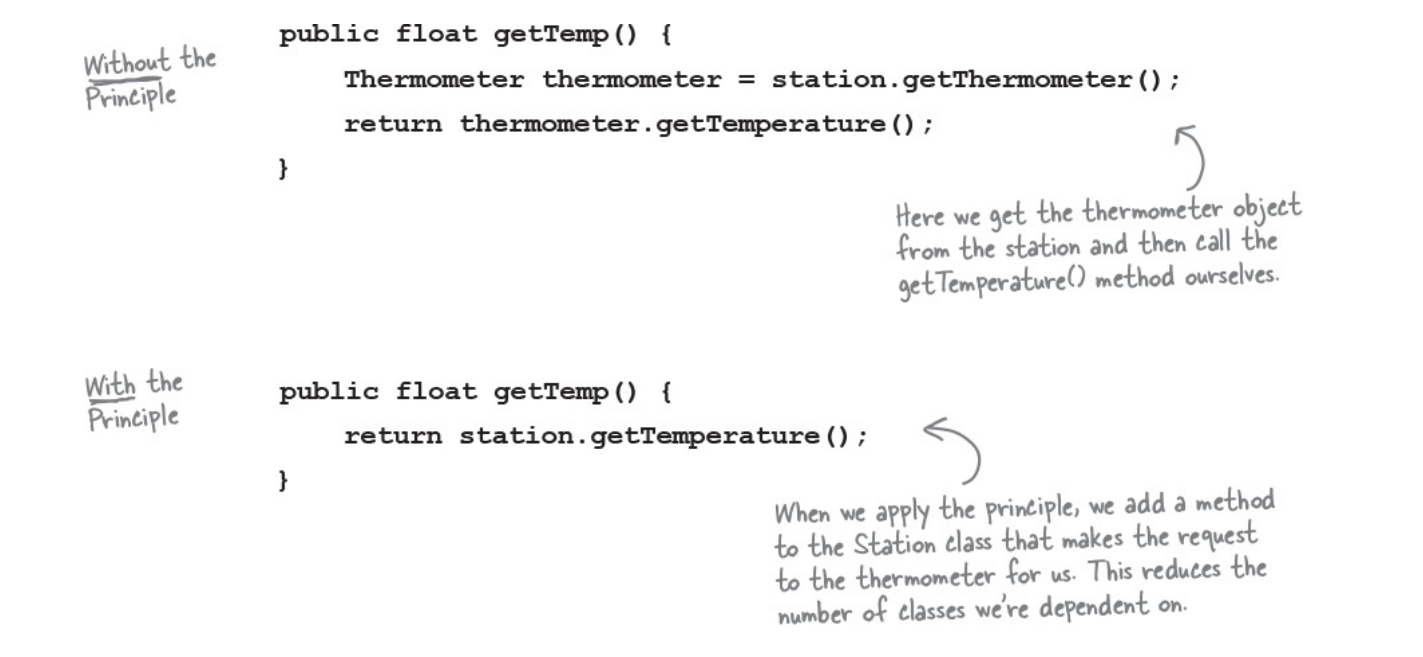Facade Pattern
This is an example for implementation for Facade pattern
Concept
The Facade Pattern provides a unified interface to a set of interfaces in a subsystem. Facade defines a higher-level interface that makes the subsystem easier to use.
the next picture ilustrase easy the main idea.

bese on the book “Head First Design Patterns Building Extensible and Maintainable Object-Oriented Software (Eric Freeman Elisabeth Robson) “ it describe how the aproach is reduce the interaction between object and pass the respoability to comunicate oit to a facade. it inforces to reduce the chain of objects you mus to interact for rech some functionality
for example

Note: this is an example of Facade patterns, its will be a series for implement all patterns in java / python / go
in the next classes you can see the implementation for apply the Facade pattern and how in the MainClass call all implemantationfor show usage, you can see the flexibility for use this structure in the problem for OOP
abstraccions
public class HomeTheaterFacade {
Amplifier amp;
Tuner tuner;
StreamingPlayer player;
CdPlayer cd;
Projector projector;
TheaterLights lights;
Screen screen;
PopcornPopper popper;
public HomeTheaterFacade(Amplifier amp,
Tuner tuner,
StreamingPlayer player,
Projector projector,
Screen screen,
TheaterLights lights,
PopcornPopper popper) {
this.amp = amp;
this.tuner = tuner;
this.player = player;
this.projector = projector;
this.screen = screen;
this.lights = lights;
this.popper = popper;
}
public void watchMovie(String movie) {
System.out.println("Get ready to watch a movie...");
popper.on();
popper.pop();
lights.dim(10);
screen.down();
projector.on();
projector.wideScreenMode();
amp.on();
amp.setStreamingPlayer(player);
amp.setSurroundSound();
amp.setVolume(5);
player.on();
player.play(movie);
}
public void endMovie() {
System.out.println("Shutting movie theater down...");
popper.off();
lights.on();
screen.up();
projector.off();
amp.off();
player.stop();
player.off();
}
public void listenToRadio(double frequency) {
System.out.println("Tuning in the airwaves...");
tuner.on();
tuner.setFrequency(frequency);
amp.on();
amp.setVolume(5);
amp.setTuner(tuner);
}
public void endRadio() {
System.out.println("Shutting down the tuner...");
tuner.off();
amp.off();
}
}
Usage
class ImageComponent extends JComponent {
private static final long serialVersionUID = 1L;
private Icon icon;
public ImageComponent(Icon icon) {
this.icon = icon;
}
public void setIcon(Icon icon) {
this.icon = icon;
}
public void paintComponent(Graphics g) {
super.paintComponent(g);
int w = icon.getIconWidth();
int h = icon.getIconHeight();
int x = (800 - w)/2;
int y = (600 - h)/2;
icon.paintIcon(this, g, x, y);
}
}
public class MainClass {
public static void main(String[] args) {
Amplifier amp = new Amplifier("Amplifier");
Tuner tuner = new Tuner("AM/FM Tuner", amp);
StreamingPlayer player = new StreamingPlayer("Streaming Player", amp);
CdPlayer cd = new CdPlayer("CD Player", amp);
Projector projector = new Projector("Projector", player);
TheaterLights lights = new TheaterLights("Theater Ceiling Lights");
Screen screen = new Screen("Theater Screen");
PopcornPopper popper = new PopcornPopper("Popcorn Popper");
HomeTheaterFacade homeTheater =
new HomeTheaterFacade(amp, tuner, player,
projector, screen, lights, popper);
homeTheater.watchMovie("Raiders of the Lost Ark");
homeTheater.endMovie();
}
}
